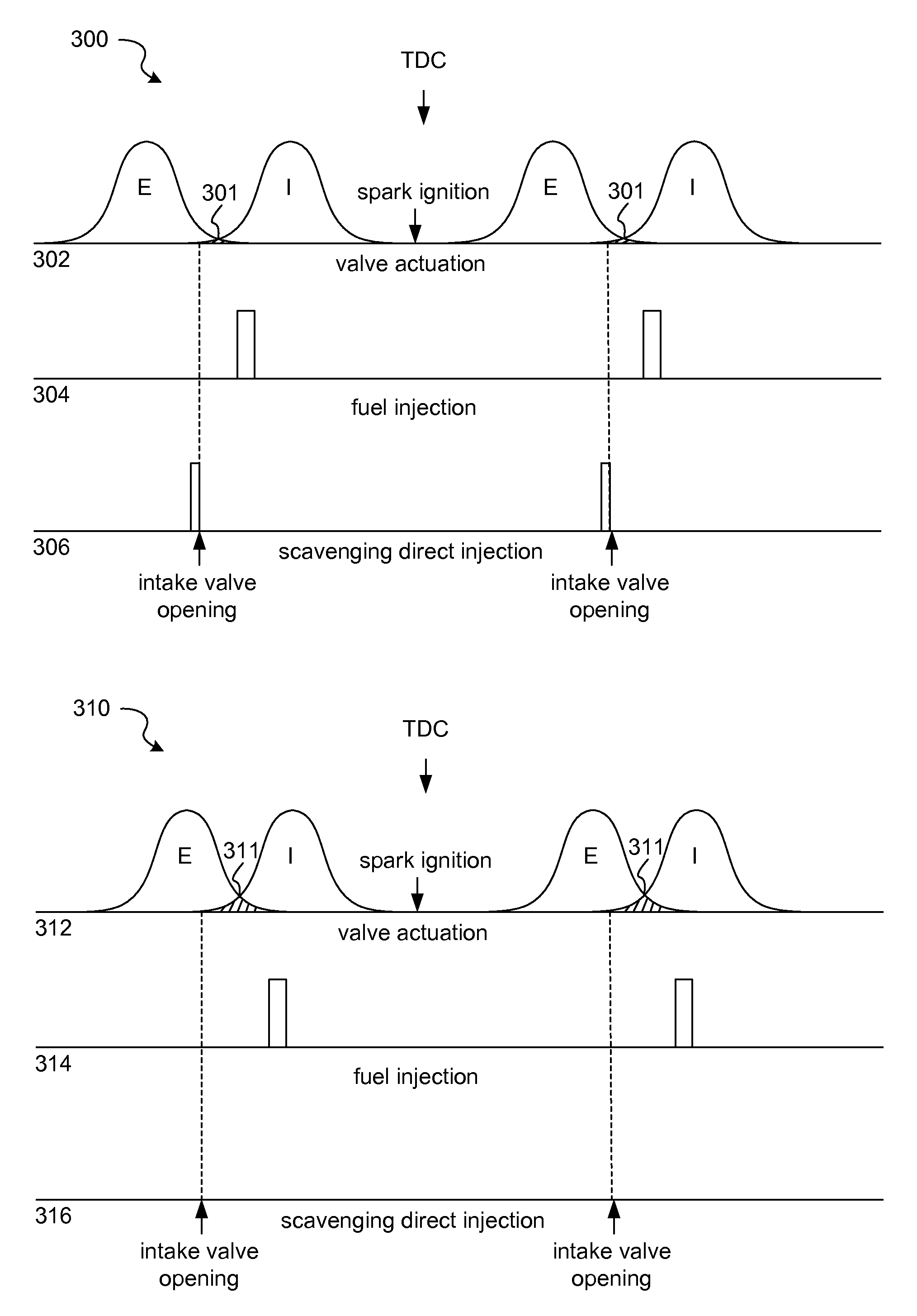Liquid injection for scavenging
a liquid injection and exhaust scavenging technology, applied in the direction of machines/engines, mechanical equipment, non-fuel substance addition to fuel, etc., can solve the problems of increasing the catalyst reducing ability, increasing the temperature, increasing the torque, etc., to reduce the knocking tendency, increase the torque, and increase the spark advance
- Summary
- Abstract
- Description
- Claims
- Application Information
AI Technical Summary
Benefits of technology
Problems solved by technology
Method used
Image
Examples
Embodiment Construction
[0013]The present disclosure details injection of a liquid for vapor scavenging. In one embodiment scavenging fluid is direct injected late in the exhaust stroke. In an alternate embodiment, employing port injection, fluid is injected during valve overlap or just before the intake stroke. With port injection into the intake air passage, liquid or vapor is readily taken in through the intake valve where it functions in the same way as directly injected fluid. In both embodiments, liquid is quickly evaporated as it hits hot residual gases or hot surfaces. A small amount of liquid expands as it evaporates and displaces the residual exhaust gas, forcing it past the open exhaust valve or valves. Heat is removed from the hot cylinder both by displacing hot residual exhaust products and through evaporative cooling. In this way, injection of scavenging fluid may also reduce propensity for knock and the method of the present disclosure can be adapted for knock mitigation. Furthermore, the pr...
PUM
 Login to View More
Login to View More Abstract
Description
Claims
Application Information
 Login to View More
Login to View More - R&D
- Intellectual Property
- Life Sciences
- Materials
- Tech Scout
- Unparalleled Data Quality
- Higher Quality Content
- 60% Fewer Hallucinations
Browse by: Latest US Patents, China's latest patents, Technical Efficacy Thesaurus, Application Domain, Technology Topic, Popular Technical Reports.
© 2025 PatSnap. All rights reserved.Legal|Privacy policy|Modern Slavery Act Transparency Statement|Sitemap|About US| Contact US: help@patsnap.com



